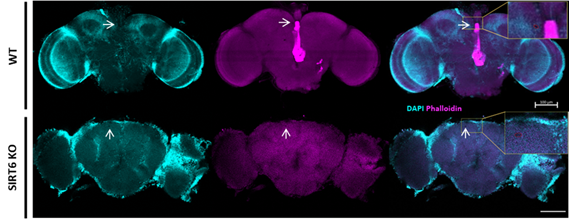L'université Bar-Ilan (Israël) montre que les rêveries améliorent les performances

[:fr]Les scientifiques de l’Université Bar-Ilan (Israël) ont démontré que les divagations d’esprit (ou rêveries) n’entravent pas la capacité à accomplir une tâche, mais l’améliorent. “Ce résultat surprenant pourrait être dû à la convergence des mécanismes de ‘pensée libre’ et ‘pensée contrôlée’ dans une seule région du cerveau”, affirme le Professeur Moshé Bar, Directeur du centre Gonda de recherche sur le cerveau, à l’Université Bar-Ilan. “Ces 15 ou 20 dernières années, les scientifiques ont montré que, alors que des tâches spécifiques provoquent une activité neuronale centralisée, la rêverie provoque l’activation d’un gigantesque réseau impliquant plusieurs parties du cerveau”, explique Moshe Bar.
“Cette activité croisée du cerveau peut avoir des manifestations comportementales sur la créativité ou l’humeur, et peut aussi contribuer à la capacité de réussir à se concentrer sur une tâche”. Les chercheurs israéliens ont aussi pu démontrer qu’un stimulus externe peut augmenter de manière substantielle le taux de rêveries, et ainsi obtenir un effet positif sur l’accomplissement de la tâche. ”Le stimulus externe a en réalité amélioré la capacité cognitive des participants« .
Pendant l’étude, les sujets ont été traités par stimulation trans-crânienne à courant direct (tDCS), une procédure sans douleur qui utilise un faible niveau d’électricité pour stimuler certaines régions du cerveau. On leur a demandé de suivre et de répondre à un certain nombre de clignotements, et de rendre compte périodiquement de la fréquence de la manifestation de pensées spontanées sans lien avec la tâche qui leur était confiée.
Selon Moshe Bar, les résultats vont bien plus loin que ce qui avait été précédemment établi via les études basées sur l’IRFM (imagerie par résonance magnétique fonctionnelle), « ils démontrent que le lobe frontal joue un rôle dans la production des comportements de rêveries« .
Publication dans PNAS, 20 janvier 2015[:en]Does your mind wander when performing monotonous, repetitive tasks? Of course! But daydreaming involves more than just beating back boredom. In fact, according to a new study published in the Proceedings of the National Academy of Sciences, a wandering mind can impart a distinct cognitive advantage.
Scientists at Bar-Ilan University are the first to demonstrate how an external stimulus of low-level electricity can literally change the way we think, producing a measurable up-tick in the rate at which daydreams – or spontaneous, self-directed thoughts and associations – occur. Along the way, they made another surprising discovery: that while daydreams offer a welcome “mental escape” from boring tasks, they also have a positive, simultaneous effect on task performance.
The new study was carried out in Bar-Ilan’s Cognitive Neuroscience Laboratory supervised by Prof. Moshe Bar, part of the University’s Gonda (Goldschmied) Multidisciplinary Brain Research Center which Prof. Bar also directs.
What Makes a Mind Wander?
While a far cry from the diabolical manipulation of dream content envisioned in “Inception” – the science-fiction thriller starring Leonardo DiCaprio – the Bar-Ilan University study is the first to prove that a generic external stimulus, unrelated to sensory perception, triggers a specific type of cognitive activity.
In the experiment – designed and executed by Prof. Bar’s post-doctoral researcher Dr. Vadim Axelrod – participants were treated with transcranial direct current stimulation (tDCS), a non-invasive and painless procedure that uses low-level electricity to stimulate specific brain regions. During treatment, the participants were asked to track and respond to numerals flashed on a computer screen. They were also periodically asked to respond to an on-screen “thought probe” in which they reported – on a scale of one to four – the extent to which they were experiencing spontaneous thoughts unrelated to the numeric task they had been given.
The Brain-Daydream Connection
According to Prof. Bar – a long-time faculty member at Harvard Medical School who has authored several studies exploring the link between associative thinking, memory and predictive ability – the specific brain area targeted for stimulation in this study was anything but random.
“We focused tDCS stimulation on the frontal lobes because this brain region has been previously implicated in mind wandering, and also because is a central locus of the executive control network that allows us to organize and plan for the future,” Bar explains, adding that he suspected that there might be a connection between the two.
As a point of comparison and in separate experiments, the researchers used tDCS to stimulate the occipital cortex – the visual processing center in the back of the brain. They also conducted control studies where no tDCS was used.
While the self-reported incidence of mind wandering was unchanged in the case of occipital and sham stimulation, it rose considerably when this stimulation was applied to the frontal lobes. “Our results go beyond what was achieved in earlier, fMRI-based studies,” Bar states. “They demonstrate that the frontal lobes play a causal role in the production of mind wandering behavior.”
Improved “Cognitive Capacity” of the Wandering Mind
In an unanticipated finding, the present study demonstrated how the increased mind wandering behavior produced by external stimulation not only does not harm subjects’ ability to succeed at an appointed task, it actually helps. Bar believes that this surprising result might stem from the convergence, within a single brain region, of both the “thought controlling” mechanisms of executive function and the “thought freeing” activity of spontaneous, self-directed daydreams.
“Over the last 15 or 20 years, scientists have shown that – unlike the localized neural activity associated with specific tasks – mind wandering involves the activation of a gigantic default network involving many parts of the brain,” Bar says. “This cross-brain involvement may be involved in behavioral outcomes such as creativity and mood, and may also contribute to the ability to stay successfully on-task while the mind goes off on its merry mental way.”
While it is commonly assumed that people have a finite cognitive capacity for paying attention, Bar says that the present study suggests that the truth may be more complicated.
“Interestingly, while our study’s external stimulation increased the incidence of mind wandering, rather than reducing the subjects’ ability to complete the task, it caused task performance to become slightly improved. The external stimulation actually enhanced the subjects’ cognitive capacity.”
Toward A Less-Mysterious Mind
Bar says that, in the future, he would be interested in studying how external stimulation might affect other cognitive behaviors, such as the ability to focus or perform multiple tasks in parallel. And while any therapeutic application of this technique is speculative at best, he believes that it might someday help neuroscientists understand the behavior of people suffering from low or abnormal neural activity.
In the meantime, Bar’s team at the BIU Lab for Cognitive Neuroscience is pleased to note that in their work on mind wandering – probably the most omnipresent internal cognitive function – they have made the human brain just a little less mysterious.
Publication in PNAS, January 20, 2015[:]







